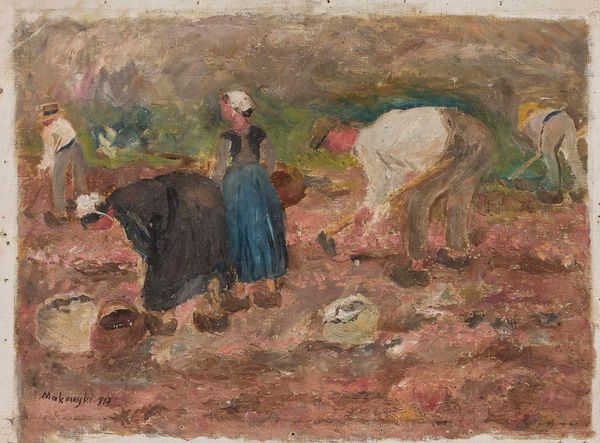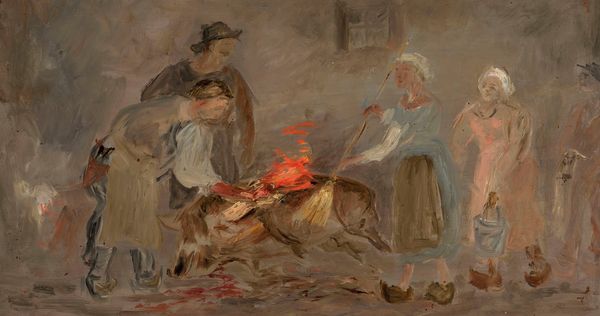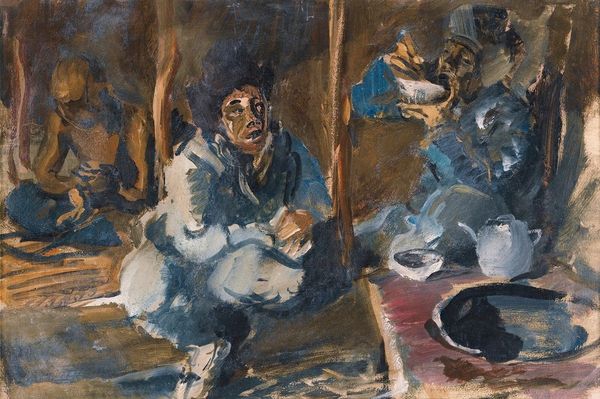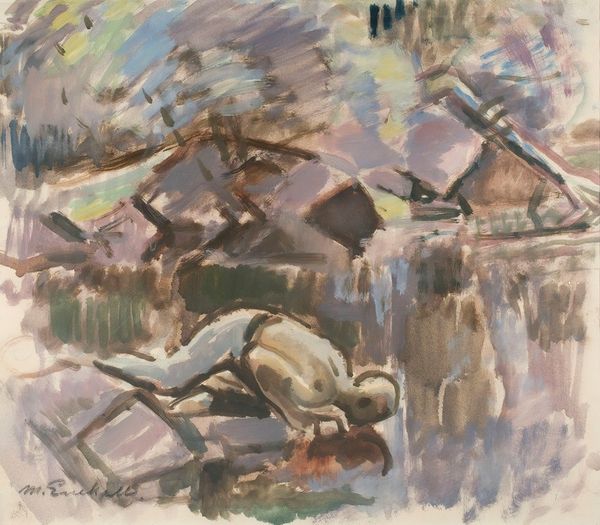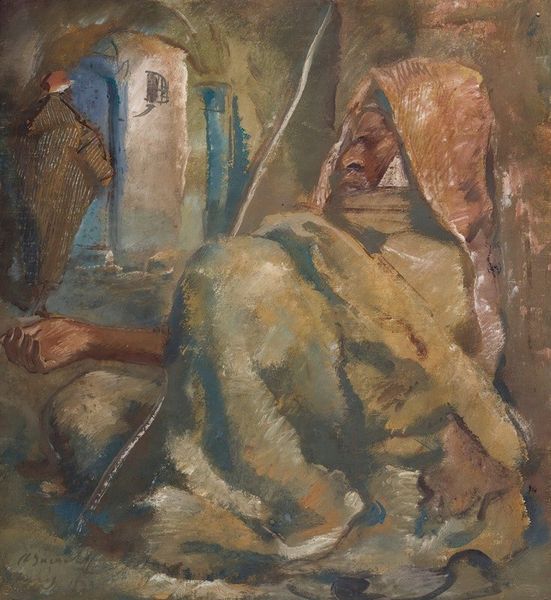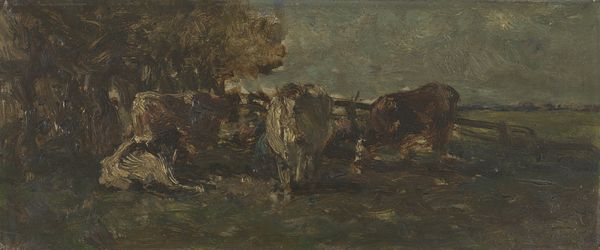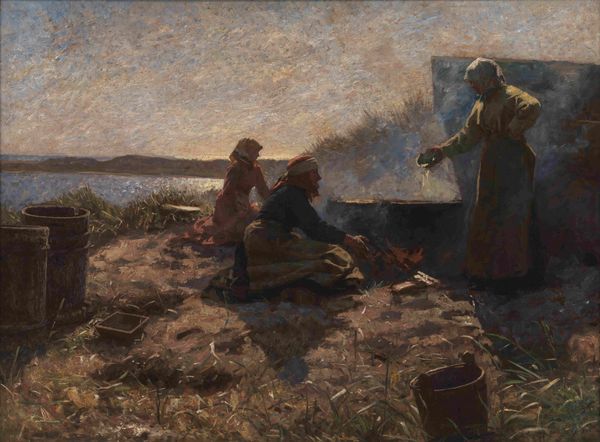
Copyright: Public Domain: Artvee
Curator: Let's delve into Tadeusz Makowski's "Work in a Field," painted around 1917. It presents two figures laboring in a landscape, rendered with visible brushstrokes in oil. Editor: My first impression is somber. The muted tones, almost monochrome palette, evoke a sense of hardship and unrelenting toil. Curator: Indeed. Considering the painting’s date, it is difficult not to view it in the context of the First World War, situating this image of rural labor within larger conversations of national identity, economic instability, and trauma. Are these idealized figures of rural virtue or symbols of the period’s socioeconomic disparities? Editor: That's precisely where I want to push further. The impasto technique makes me think about the physicality of the work both depicted and produced. Notice the layering of paint mirroring the layers of earth being turned, connecting artistic labor directly to agricultural labor. It makes one wonder about Makowski's relationship to these processes. Curator: Certainly, and beyond the surface, we need to consider that Makowski was part of the post-impressionist movement, a period where artists explored beyond realism. His choice to focus on laborers hints at the growing social consciousness prevalent among artists of his generation, as well as their aesthetic interest in scenes of everyday life. Editor: The tools they're using speak volumes about the history of agriculture. The rudimentary implements highlight the strenuous, manual nature of farming before mechanization. Who owned these tools and the fields? What were the working conditions for these laborers? These are questions we cannot ignore. Curator: And these figures themselves, we see only hints of their faces, they are partially faceless representations, forcing the viewer to project upon them their understanding, or perhaps misunderstanding, of the working class. Their universality then becomes part of their message. Editor: It's this unvarnished portrayal of manual labor, highlighting the tangible exertion, that I find so captivating. It compels us to reckon with the realities of production, then and now, forcing us to interrogate art’s role in visualizing—and perhaps also romanticizing—such conditions. Curator: Absolutely. Examining Makowski’s "Work in a Field" offers a rich insight into the interweaving of artistic style and social commentary in early 20th-century Europe. Editor: Indeed. It reminds us to constantly question how the stories of labor are constructed and whose voices are prioritized.
Comments
No comments
Be the first to comment and join the conversation on the ultimate creative platform.
